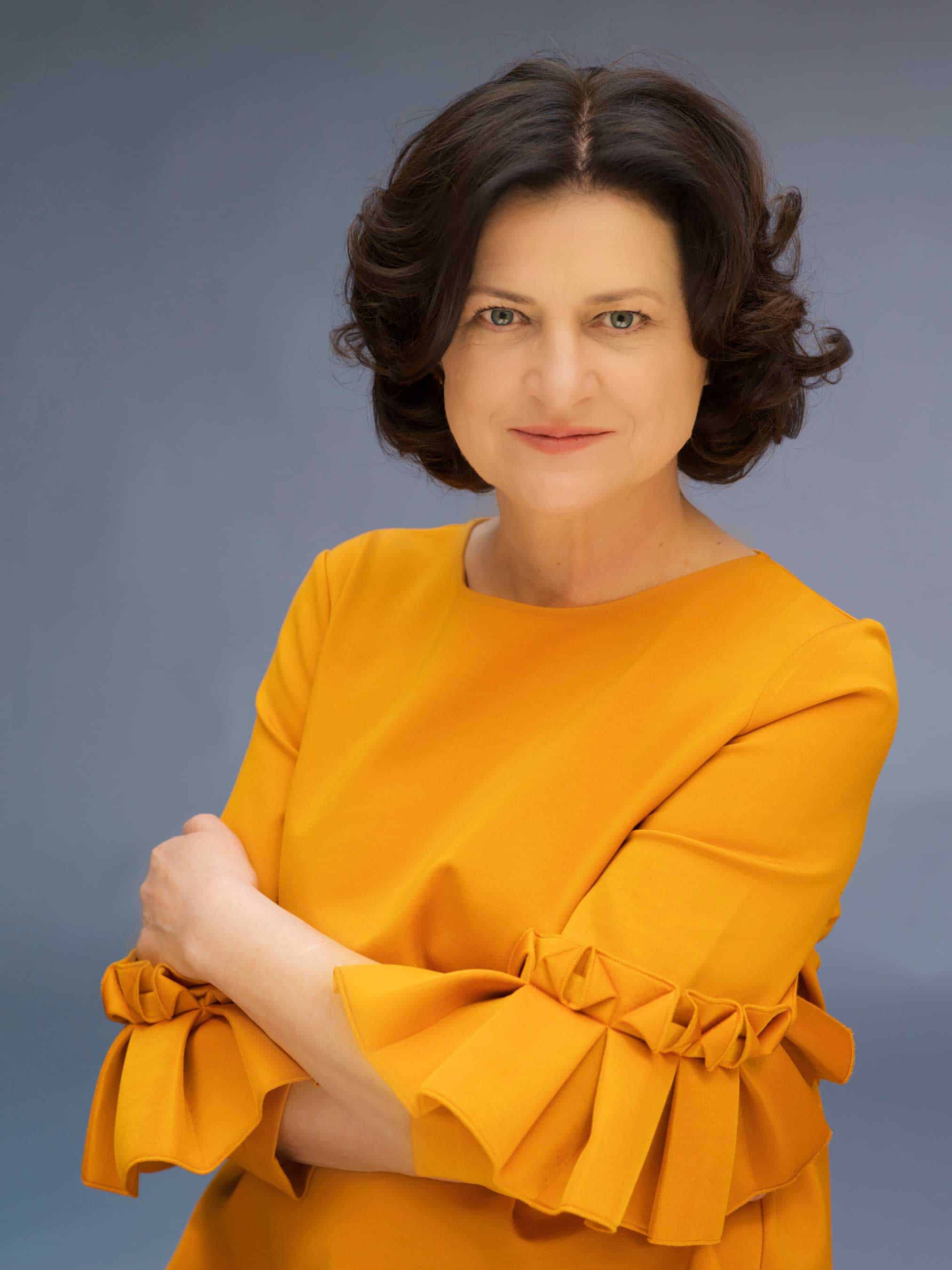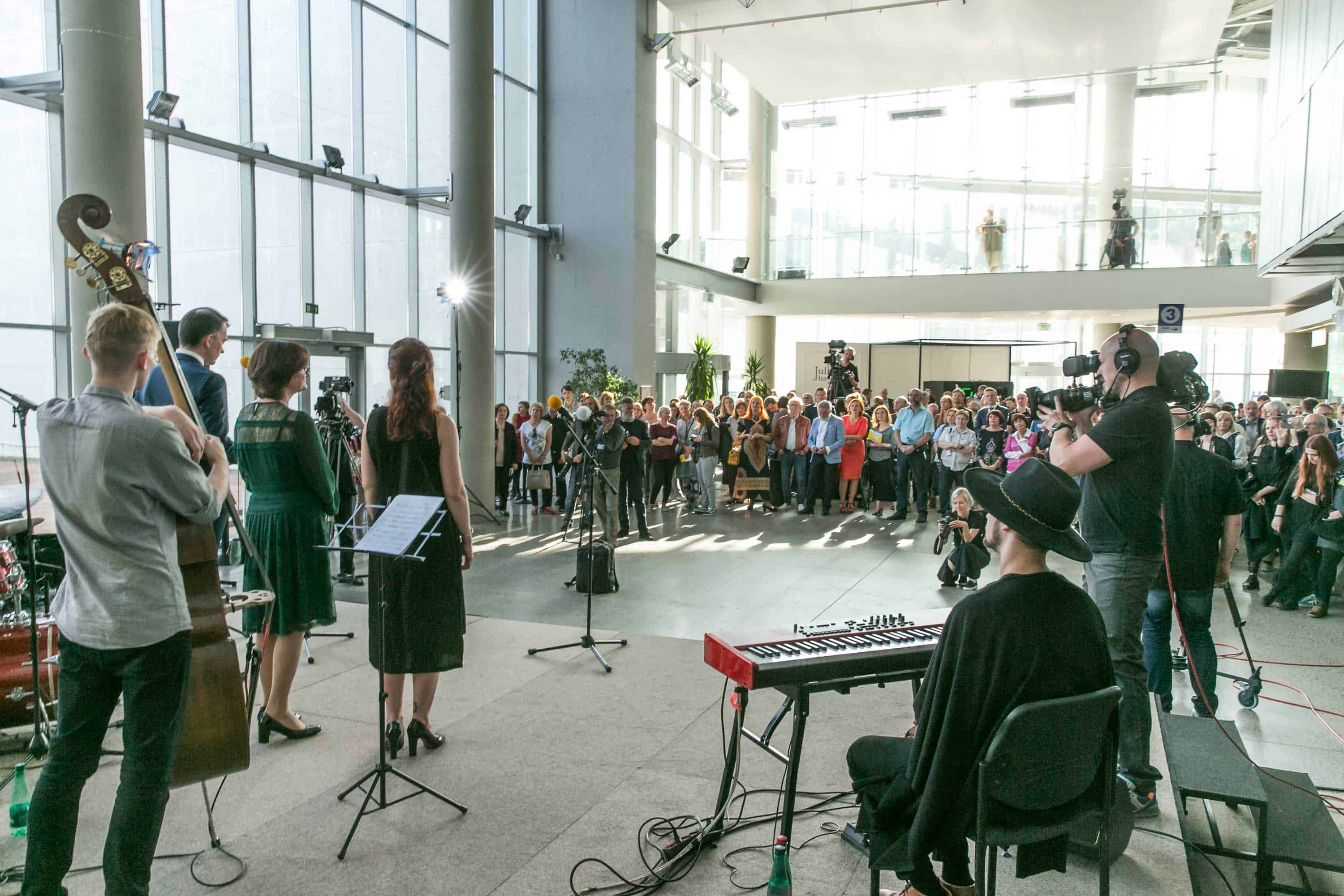The ArtVilnius will take place between 30 May and 2 June in Lithuania. This year, this biggest visual arts event in Eastern Europe celebrates the 10th anniversary. On this occasion, the director Diana Stomienė reflects on how the fair has changed within 10 years and shares some highlights of this year’s edition.
<
Michalina Sablik: The first art fair in Vilnius was organised ten years ago in 2009. How has it changed over the years?
Diana Stomienė: Art Fair ArtVilnius was launched in 2009, having for the primary purpose the activation of the art markets of the Baltic States and the Eastern European region, networking development, gathering of galleries and collectors, developing contemporary art education, and establishing itself in the calendar of famous international art fairs.
In the past ten years, Art Fair ArtVilnius has become an important and reputed player in the Eastern European region. Geographically, there is no art fair of such an art content or volume within a 1000 km radius.
ArtVilnius has not only become a selling point for the works of art, but also an important networking centre between East and West, as well as an entry-level platform for galleries to access other famous Western European art fairs. Compared to other art fairs, ArtVilnius is outstanding for special attention it has been paying to art education for ten years and for growing contemporary art consumers. Looking at the art scenes in the Baltic States – Latvia, Estonia, or other neighbouring countries, such as Belarus, Poland, or Ukraine, the most acceptable art ten years ago was conventional modern art.
Since 2014, the fair has had its focus every year. We started inviting international curators and successfully introduced artistic photography. Later, in 2017, video art became the main focus of the fair with VIDEONALE, the oldest festival of video art in Germany, as the main highlight.
We have been successfully focusing on the art scenes of our neighbouring countries: Ukraine, Poland, Estonia, Latvia. And this year we will celebrate our 10th anniversary with French art and dedicated programme Focus France.
Next to the fair’s gallery programme, there is a separate hall, covering the area of 4000 sq. m, dedicated to ArtVilnius art projects which include solo projects by prominent Lithuanian and foreign artists, exhibitions and famous collections of international art institutions.
MS: Do you see any major changes in the art market of the CEE countries?
DS: Currently, the leading Eastern and Central European art fair is viennacontemporary. We have similar goals; we collaborate with this and other smaller art fairs. Over the last decade, a number of local art fairs have been opened and many fairs have failed to survive the competition. However, art market processes show that the role of art fairs is gaining in significance, they are important for galleries, and participation in art fairs is becoming more and more important to be part of the art market process.
MS: The aim of the fair is also to bridge Western and Eastern art worlds. Do you feel there still is a gap between these two ‘worlds’? How do you bring them closer?
DS: Yes, the gap still exists on account of different economic indicators. It is not easy at all to catch up with Western countries after 50 years of occupation. The traditions of patronage and collecting are being re-established anew. As history shows, one can achieve a great deal with great motivation, active galleries and talented artists. And it will depend on stability in the global economy whether the gap is successfully bridged.
Creativity and art have no borders, and international communication is therefore very important. We are not about to replicate the content of Western European art fairs; we aim to present the Eastern European art scene to Western art experts, collectors, and media. It is particularly important for us to invite as many of them as possible, not only to attract their interest in the fair but also to introduce developments in Lithuanian museums, art centres and galleries.
MS: What is the position of Central and Eastern art on the world scene? Do you see any impact of the Art Vilnius on the local, Lithuanian art scene?
DS: Art Fair ArtVilnius is very important for the Lithuanian art market. Initially, the fair was more visited as an exhibition, and now it is a meeting point and a place not only to overview new art trends, but also to buy artworks. For Lithuanian art galleries and artists, it is the starting point for selling artworks and entering the wider international art market. Sales of artworks are growing not only during the fair, but the process moves to galleries thereafter. There appear corporate collections and new private collectors.
The current situation both in Lithuania and worldwide shows that entrepreneurs are already replete with material goods (real estate, cars, and various luxury items). They have now become attuned to making their investments more meaningful, i.e. they want to be remembered by sharing their achievements with the public through art projects and thus supporting creative people. This trend has also been observed among patrons and partners of the fair. For example, the exclusive partner of the fair, Lewben Group, not only purchases artworks, but also presents their collection of works by world-renown artists at ArtVilnius, contributing this way to the education of the public.
We are glad that the Baltic art market is becoming more active, that Latvians and Estonians are actively participating in ArtVilnius, selling their works, and have already established useful contacts and developed interesting joint projects.
MS: How do you select galleries for the fairs?
DS: Like most art fairs, we follow the same system. We announce a competition for applications, and every year we are getting more and more applicants who are selected by a commission composed of art professionals. The programme of the fair is developed by the art director of the fair. We are also visiting many art fairs and, as usual, inviting galleries which we personally find interesting. After a decade, we have now forged a group of loyal galleries that have been participating since the first art fair.
MS: What does it mean that your art fair is democratic?
DS: Democratic because it is open to non-standard interdisciplinary arts, young galleries, and young artists.
ArtVilnius is an event where visitors can spend the whole day meaningfully. The main exhibition space covering 12 thousand sq. m is on the ground floor, and it is spacious and comfortable for all groups of visitors. Visitors may relax in the spacious outdoor area where works of art are also displayed. An additional educational programme is organised for children and parents: they can visit panel discussions and lectures, meet artists, watch or participate in the programme of performances, etc.
And most importantly, it is possible to buy the latest artworks during the fair.

The Best ArtVilnius18 Installation, Vladas-Urbanavicius, “The Path” international exhibition of installation, sculpture and performance;
MS: You are focusing on the young art scene and small galleries. Why is it so important for you to give exposure to smaller art spaces?
DS: All art galleries once were ‘small’; after working hard and well, they became ‘medium’ or ‘mega’. For ‘small’ galleries, participation and selling of artworks at ArtVilnius means a starting position, a great deal of experience, and a perspective for their further activities. ArtVilnius pays great attention to young artists, and we have a number of success stories. It is important for us to raise awareness of galleries and young artists together with the fair. Ten years ago, only one Lithuanian art gallery Vartai would take part in famous foreign art fairs, and now we have six Lithuanian galleries doing successfully in foreign fairs.
MS: Alongside the contemporary art galleries programme, a separate project zone is also organised in which various art institutions and individual artists will present special exhibitions. What can we expect and experience this year?
DS: This year, a collection of our exclusive partner, the Lewben Art Foundation, will be traditionally presented in the project area. This year, even four Lithuanian and foreign curators were invited to curate it and analyse religious matters. We are also very proud of our cooperation with the Polish Museum of Contemporary Art in Krakow (MOCAK) presenting their new collection programme for the 4th time. This time it will be a video and photography exposition curated by Monika Koziol. Hall 4 will host vide film about Jonas Mekas presented by the Jonas Mekas Visual Arts Center. Curator Aurelie Faure is preparing a painting, video and installation exhibition, accompanied by two performances, with young but already remarkable French artists. Perfect dialogue and counterbalance will be a project spaces ‘Autarkia’ with the brightest young Lithuanian artists, curated by Robertas Narkus. The Contemporary Art Centre will present an interactive video installation by Darius Žiūra, and the Nordic and Baltic Young Artist Award will showcase the installation of the winner Elina Vitola (Latvia). This year’s novelty is a collaboration with the National Opera and Ballet Theatre, which will present contemporary dance performances of the most talented ballet artists on a specially equipped stage.
MS: What are the highlights for Art Vilnius 2019, of which you are particularly proud?
DS: We received the record-breaking number of applications from galleries this year, and we selected 66. France is invited as a guest country to present even 11 galleries. The curator has prepared a very ambitious and modern programme. We are proud of the variety of genres and modern ballet in the programme of the fair. Visitors will have the opportunity to see outdoor large-scale sculptures exhibition, performances down in the city, and audio artists’ programme. Painting and other traditional media lovers will also find a very wide range of offers. The program will be accompanied by panel discussions, interviews with collectors, e.g. renowned Portuguese curator and art collector D. André de Quiroga., Friday night will move down to the city with the Night at the Gallery.
This year, Vilnius will meet visitors and guests with two new private museums – in MO and Tartle, what is another reason to visit the capital of Lithuania.
Edited by Contemporary Lynx















